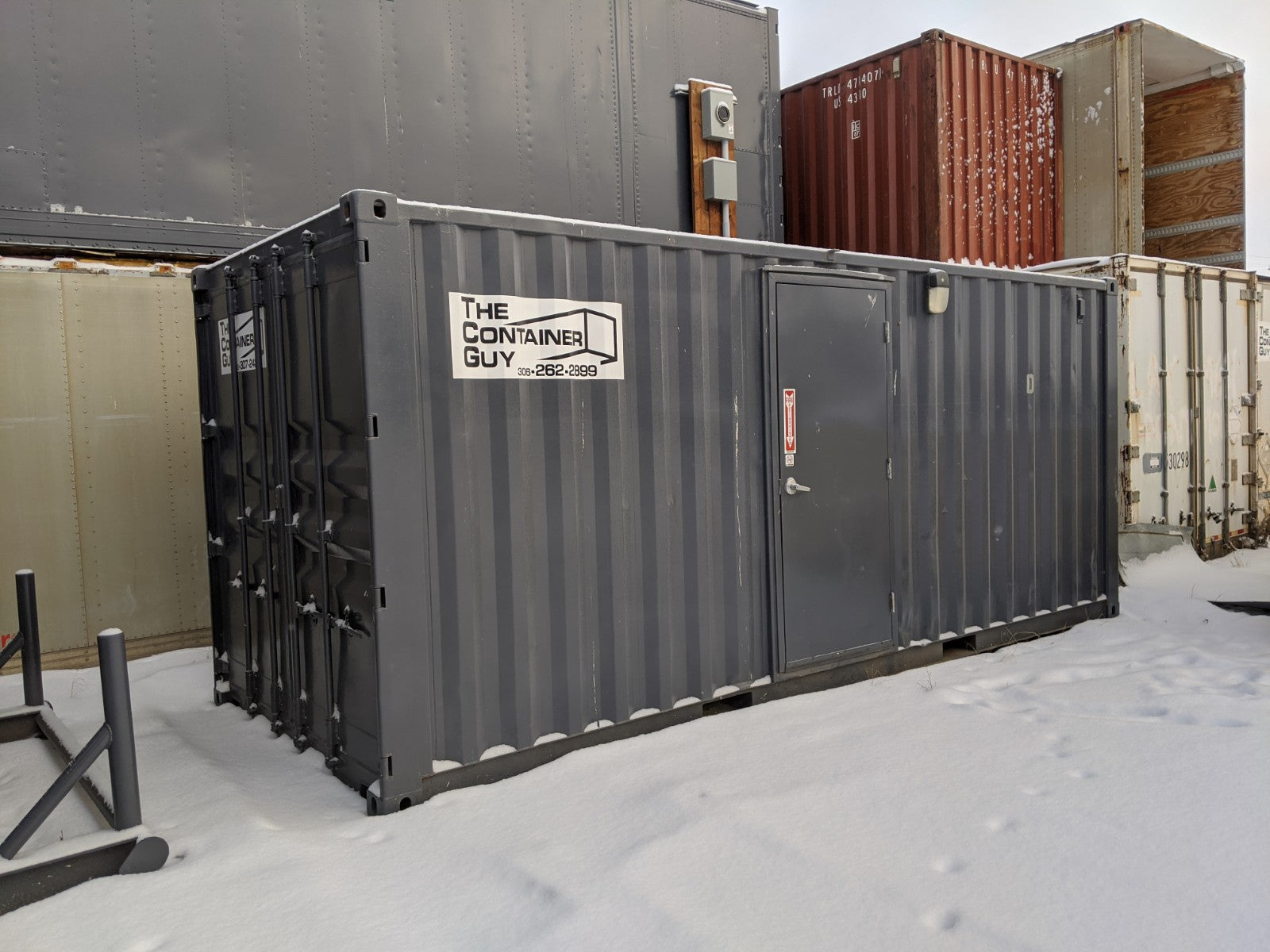If you own a shipping container, you are already ahead of the game. Sea cans are designed to keep everything inside safe from the environment, such as the sun, snow, wind, and rodents. So relax. You're ready for winter.
But if you want to take that extra step further in protecting your shipping container and the possessions inside, keep reading because we got some great tips for you.
Problem #1: Condensation
The first problem many people face when owning a shipping container is condensation. Condensation is a huge problem in Canada, especially in winter.
It could be minus 20 outside, but with the sun reflecting off the steel, the outside of a shipping container is warm—warm enough to warm up your hand even. Although this is great for your cold hands, it isn’t great for the items inside the container.
So when the sun heats the steel, the steel no longer matches the temperature inside the container. That is when condensation builds up.
For example, if you pour ice-cold water into a warm glass, eventually water droplets will appear on the sides of the cup and drip down onto the table.

It's the same for your shipping container. If there is a temperature change between the air inside and outside the container, water droplets will appear. Instead of condensation building up on the outside of the container like the water glass, it will appear on the inside called container rain.
Container rain occurs when water droplets appear on the container walls and ceiling and drip onto the floor or anything stored inside. This rain can lead to big problems in the future, such as mold, mildew and rust.
Solution #1: Ventilation
If condensation starts to build up in your container, the solution 90% of the time is to install vents.
Condensation is a big issue in wintertime and colder climates, but it can happen anytime of the year and in other climates as well—especially humid ones. So no matter where you live, if condensation could be an issue, you need to install vents.
The least expensive and most efficient vent to install are passive vents, such as the Big Air 45 Vent. This vent is designed to be installed anywhere on a container from floor to ceiling. You can install it on the end walls, container doors, and sidewalls.

Installing two passive vents diagonally (one high and one low) will air out the container and match the inside temperature to the outside.
There are many other vents out there besides passive, but they are more expensive, require electrical and are designed to control the temperature and air quality of the container.
If you don't need to control the container's temperature or air quality, passive vents will be perfect to combat condensation and protect your items from damage during winter.
Problem #2: Containers Frozen to the Ground
Another issue people may face during winter is their container freezes to the ground and they're unable to move it. This usually occurs when a container is placed on the ground without blocks underneath the corner posts and it ends up sinking into the ground.
Once it sinks into the ground and the ground freezes, your container is now frozen to the ground and it is nearly impossible to winch it out.
So if you plan to move your container during winter at all, ensure you have placed blocks beneath the corner posts so it's easier to move when you need to.
Solution #2: Wooden Blocks & Container Lifter
Lifting your container onto blocks isn't a solution for everyone if they don't have the correct equipment.
If this is you, we have a nifty product that is mainly used to level your container but can also lift your container off the ground. 
Container Modification World's Twist 'N' Jack attaches to the corner posts of your container and lifts it off the ground even if it is already frozen.

Problem #3: Roof Damage
Another way to prepare for winter is to check your container for damage, such as rust or pinholes.
During the winter, we sometimes get inches of snow at a time, and what you don’t want is for a huge snow load to concave your container ceiling and cause irreparable damage to your container or items inside.
Solution #3: Check for Damages
So before winter hits, do a walk around of your container—especially the roof— and check for damages. See if there are any areas that hold water or places that are starting to cave in.
Push out any dents holding water and silicone or caulk pinholes where the sun is creeping in. And if there is damage to the middle of the roof or walls that cannot be fixed by caulking or pushing out dents, fiberglass patches that cure within five seconds of exposure to UV light or sunlight will do the trick.
Problem #4: Rodents
Another problem that can cause issues during winter is rodents could sneak under your shipping container through the forklift pockets, or mice/birds could nest in the corner castings.
Although shipping containers are rodent-free, and they won’t be able to gnaw their way into the container, rodents such as skunks, foxes, rats or bunnies can still make the underside of the container their home during winter. These animals could cause health issues or problems later on.
Solution #4: Pest Plugs
We are currently in the beta stage of designing a “Pest Plug Plate” that will cover the forklift pockets so larger rodents cannot sneak under your container.
It is not yet ready for purchase, but please let us know if you are interested in buying this in the future.
If you are interested in buying, renting or modifying a shipping container, contact The Container Guy for any and all questions. We carry all sizes of new and used shipping containers.

